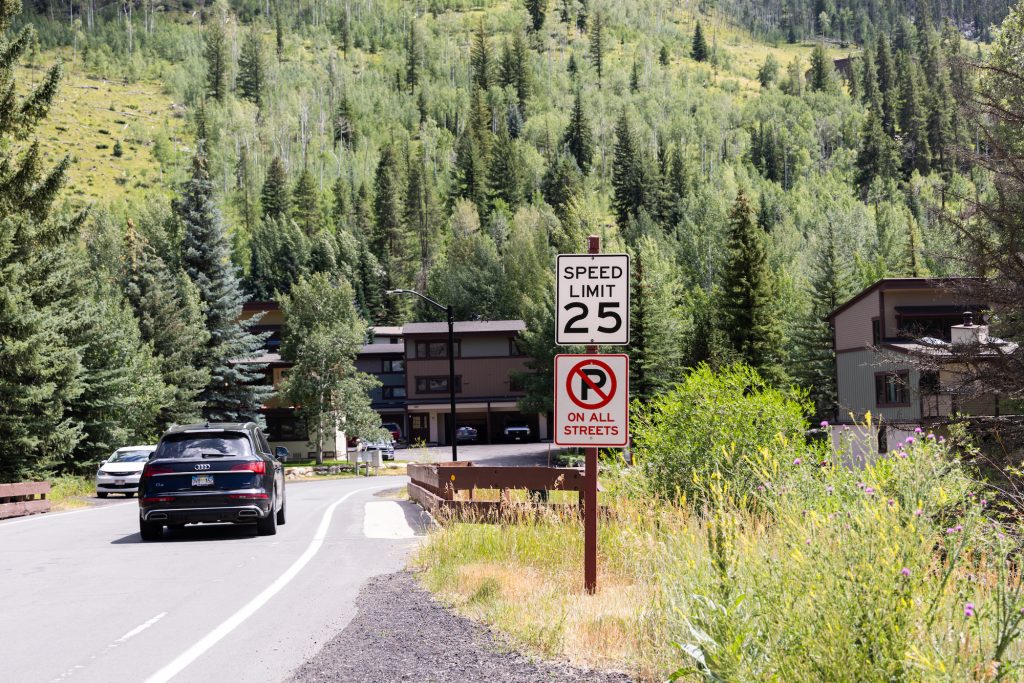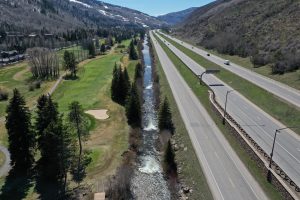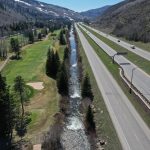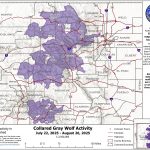Vail wants to take the first step slowing cars down in Intermountain neighborhood
Town likely to consider implementing a uniform speed limit in its residential neighborhoods

Madison Rahhal/For the Vail Daily
Vail’s Town Council recently decided to take a firm stance on reducing the speed limits in the Intermountain neighborhood. Whether or not it will achieve the desired effect is still up in the air.
Vail’s Police Chief Ryan Kenney presented the results of two speed studies in West Vail’s Intermountain neighborhood at the Tuesday, Aug. 1 Town Council meeting.
The study was conducted after resident complaints about speeding through the neighborhood, specifically on Kinnikinnick Road. Speeds through the neighborhood are set at 25 mph, even though some signs have been modified to read 15 mph over the years. The first speed study on Kinnikinnick was determined not to be “entirely accurate,” as it was located too close to a stop sign, so a second was conducted, Kenney said.
This second study showed that Westbound Kinnikinnick Road had speeds “averaging around 17 mph,” Kenney said. He added that during an additional 16 hours the department spent in the area, there was one speed violation and three stop sign violations.
“The data that we have there is that the majority of the cars are going at or below the speed limit,” he said.

Support Local Journalism
Kenney noted that the majority of the complaints the department receives are in locations where there are no separations between the road and pedestrian walkway.
“When a car goes by a person who’s walking or on a bike and there isn’t a sidewalk or there isn’t a separation between the road at that pedestrian — it really feels like the car is going fast past you,” Kenney said. I’m not saying it’s not going fast, I’m just saying it feels like it’s going a lot faster. I think the perception is there’s a lot more of a speed problem than the data would actually suggest.”
What should the speed limit be?
According to Kenney, the police department uses these studies to determine whether different speed limits are required and to make decisions about where to station officers. The department considers whether or not cars are violating the posted limit, how frequently as well as where and when violations are occurring. It also looks at the frequency of traffic accidents.
In Intermountain, Kenney said the hours spent patrolling and studying this road demonstrated there are “not a lot of speed violations” and not a lot of accidents.
“It’s posted at 25 mph and most of the vehicles are at or below that,” he said. “We do have some cars that go above that, we do see that in the speed study, but the majority of our vehicles are at or below.”
With these findings, there was a discussion as to whether reducing the speed limit was necessary as well as whether it would be effective.
Tom Kassmel, the town’s engineer, said that most literature about speed studies suggests that “people drive whatever they’re comfortable driving, not what the speed limit says unless there’s a police officer present, and then you go the speed limit — if you know the speed limit.”
“We certainly could go through the motions of changing the speed limits to 15, but I don’t think you’ll see a change,” Kassmel added.
Kassmel noted that other traffic calming measures could be more effective at reducing speed, including radar speed signs, speed humps and more.
Kenney agreed that he didn’t think reducing to 15 mph would change the overall speed in the area, but would “make enforcement a little bit tougher.”
Greg Hall, the town’s public works director, noted that in the early ’90s all roads in Intermountain had been raised to 25 mph after police at the time said they could enforce speeds with that posted limit, but that at 15 mph, “they would just not want to be going down there.”
Hall added that when the change was made, before and after speed studies showed no change in the speeds.
Taking a measured or uniform approach?
Regardless, Mayor Kim Langmaid, who lives in the neighborhood, felt that “we just need to take some action,” including lowering the speed to 15 mph and adding traffic calming measures in certain areas.
“You really have to live there and feel it every day to understand what we’re talking about and all these emails that we’re getting from the people that live there,” Langmaid said.
Included in the Aug. 1 meeting packet were 11 public comments received on the day of the meeting. These comments cite concerns about the width of the road, high pedestrian usage without adequate pedestrian infrastructure and driving speeds — all as traffic in the neighborhoods increases.
“There are no sidewalks, blind bends, a children’s playground, a dog park and two bus stops on the road which make it very busy with pedestrian traffic,” wrote Intermountain resident Jayne Taylor in an email. “It makes zero sense to have a 25 mph speed limit.”
There was an agreement among the council that there should be a consistent speed limit in all the town’s residential neighborhoods. To do so, town staff noted that this could be a lengthy and challenging process as it would likely involve updating the town’s model traffic code, which was last updated in 1978.
With this, Langmaid did not want to wait to lower Intermountain’s speed limits, commenting “that’ll take forever.”
“All of the other neighborhoods are 15… if we could take the incremental step of making a change now, that would be great and then we can take up the larger issue,” Langmaid said. “We gotta do something, it’s been going on for years and I feel like if we get into this larger conversation, it would take another year, we’ll be off the council.”
While she said she understood and agreed the speed limits should be uniform, Langmaid said that this step would merely add “15 to everywhere else that is already 15.”
Ultimately, this was the direction given to town staff. Town Manager Russ Forest added that this change in Intermountain would just be contingent “upon review and approval from the town attorney.”
Then, in the future, the town will likely look at implementing a uniform residential speed limit.











